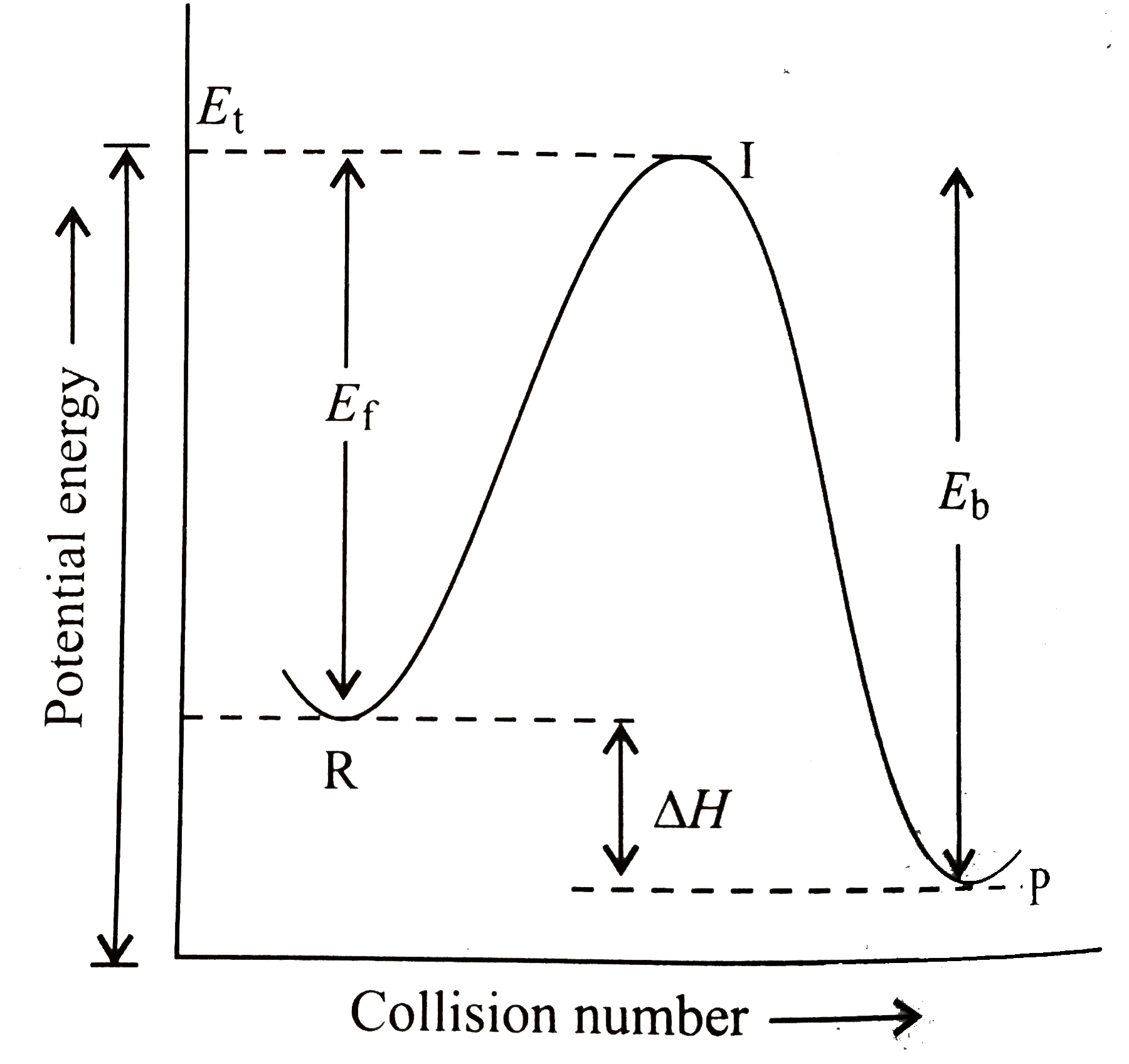What is activation energy ? How is the rate constant of a reaction related to its activation energy ?
Step-by-Step Solution:
Step 1: Define Activation Energy
Activation energy (Ea) is defined as the minimum amount of energy required for reactants to undergo a chemical reaction. It is the energy barrier that must be overcome for the reactants to transform into products.
Step 2: Explain the Concept of Rate Constant
The rate constant (k) is a proportionality factor in the rate law of a chemical reaction. It relates the rate of the reaction to the concentrations of the reactants. The value of the rate constant is influenced by various factors, including temperature and activation energy.
Step 3: Relate Activation Energy to Rate Constant
The relationship between the rate constant (k) and activation energy (Ea) can be described by the Arrhenius equation:
k=Ae−EaRT
Where:
- k = rate constant
- A = pre-exponential factor (frequency factor)
- Ea = activation energy
- R = universal gas constant (8.314 J/mol·K)
- T = temperature in Kelvin
Step 4: Interpret the Arrhenius Equation
From the Arrhenius equation, we can see that:
- As the activation energy (Ea) increases, the exponential term e−EaRT decreases, leading to a smaller rate constant (k). This means that reactions with higher activation energies proceed more slowly.
- Conversely, if the activation energy is low, the rate constant is higher, indicating that the reaction occurs more quickly.
Activation energy (Ea) is defined as the minimum amount of energy required for reactants to undergo a chemical reaction. It is the energy barrier that must be overcome for the reactants to transform into products.
The rate constant (k) is a proportionality factor in the rate law of a chemical reaction. It relates the rate of the reaction to the concentrations of the reactants. The value of the rate constant is influenced by various factors, including temperature and activation energy.
The relationship between the rate constant (k) and activation energy (Ea) can be described by the Arrhenius equation:
- k = rate constant
- A = pre-exponential factor (frequency factor)
- Ea = activation energy
- R = universal gas constant (8.314 J/mol·K)
- T = temperature in Kelvin
From the Arrhenius equation, we can see that:
- As the activation energy (Ea) increases, the exponential term e−EaRT decreases, leading to a smaller rate constant (k). This means that reactions with higher activation energies proceed more slowly.
- Conversely, if the activation energy is low, the rate constant is higher, indicating that the reaction occurs more quickly.
Topper's Solved these Questions
- BOOK - PRADEEPCHAPTER - CHEMICAL KINETICSEXERCISE - ADDITIONAL QUESTIONS (SHORT ANSWER QUESTIONS) VII. Collision theory1videos
CHEMICAL KINETICS
- BOOK - PRADEEPCHAPTER - CHEMICAL KINETICSEXERCISE - ADDITIONAL QUESTIONS (SHORT ANSWER QUESTIONS) VIII. Miscellaneous5videos
CHEMICAL KINETICS
- BOOK - PRADEEPCHAPTER - CHEMICAL KINETICSEXERCISE - ADDITIONAL QUESTIONS (SHORT ANSWER QUESTIONS) V. First order reactions, pseudo first order reactions and reactions and radioactive disintegration5videos
CHEMICAL KINETICS
- BOOK - PRADEEPCHAPTER - BIOMOLECULES EXERCISE - IMPORTANT QUESTIONS (FOR BOARD EXAMINATION)25videos
BIOMOLECULES
- BOOK - PRADEEPCHAPTER - CHEMISTRY IN EVERYDAY LIFE EXERCISE - IMPORTANT QUESTION FOR BOARD EXAMINATION30videos
CHEMISTRY IN EVERYDAY LIFE
Similar Questions
Knowledge Check
- Question 1 - Select One
The activation energy of a reaction is zero. The rate constant of the reaction
Aincreases with increase of temperatureBdecreases with increase of temperatureCdecreases with decrease of temperatureDis nearly independent of temperature. - Question 2 - Select One
The activation energy of a reaction is zero. The rate constant of the reaction
Aincreases with increase of temperatureBdecreases with decrease of temperatureCdecreases with incrrease of temperatureDin nearly independent of temperature - Question 3 - Select One
Activation energy of the reaction is :
Athe energy released during the reactionBthe energy evolved when actiavated complex is formed sCminimum amount of energy needed to overcome the potential barrierDthe energy needed to from one mole of the product
The activation energy of a reaction is zero. The rate constant of this reaction
View SolutionThe activation energy of a reaction is zero. The rate constant of this reaction
View SolutionThe rate of reactions exhibiting negative activation energy
View SolutionActivation energy is ______ to rate of reaction
View SolutionA colliison between reactant molecules must occur with a certain minimum energy before it is effective in yielding Product molecules. This minimum energy is called activation energy Ea Large the value of activation energy, smaller the value of rate constant k. Larger is the value of activation energy, greater is the effect of temperature rise on rate constant k.

Ef= Activation energy of forward reaction
Eb= Activation energy of backward reaction
ΔH=Ef−Eb
Ef= threshold energy
The rate constant of a certain reaction is given by k=Ae−Ea/RT
(where A= Arrhenius constant). Which factor should be lowered so that the rate of reaction may increase?View Solution
